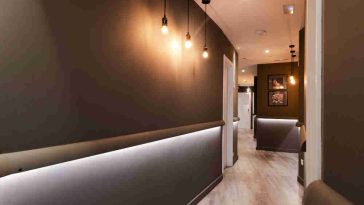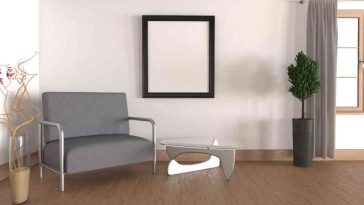Both solid and engineered hardwood are premium flooring materials that add value to your home. Depending on your budget and style preferences, you can choose either option.
However, an engineered hardwood floor may be a better choice if you live in a climate with temperature and humidity fluctuations. This is because it is more stable than a solid wood floor.
Cost
Generally speaking, solid hardwood is more expensive than engineered wood. But, the overall cost of the flooring will depend on many factors, including installation costs and the removal of any current carpeting or other floors. In addition, the type of stain or top coat used to seal your solid or engineered hardwood can also impact the price tag. For example, certain resins or topcoats can contain chemicals that cause off-gassing, which may leave a toxic odor in your home for a period of time.
Typically, solid hardwood floors are nailed to the subfloor with tongue and groove planks that fit together. However, there are many types of tongue and groove planks, some offering a smooth surface while others offering a textured surface that helps hide any gaps. The smooth planks are ideal for areas that will see a lot of foot traffic and are more resistant to stains, scratches, and dents.
Engineered hardwood can be glued down, nailed down, or floated. It can be installed over plywood, cement boards, and radiant heating flooring. Engineered wood can be less expensive than solid hardwood, but the quality of the product will determine if it is worth the extra expense.
Like solid wood, engineered hardwood can be sanded and refinished several times. But it’s important to remember that refinishing can release volatile organic compounds (VOCs) into the air, so you should opt for a water-based finish when possible.
Both types of wood floors can look great for a long time. But the longevity of a hardwood floor comes down to how well it is cared for, which includes regular sweeping and dust mopping as needed. Vacuuming with a bare floor setting or using a cleaner with the beater bar turned off will also extend the life of your floors.
Solid wood is a very sustainable product that can be re-sanded multiple times over its lifetime. Because of this, it is an eco-friendly option, especially when you choose hardwoods certified by the Forest Stewardship Council. However, engineered wood is equally eco-friendly since it uses what would otherwise be waste materials from manufacturing solid wood products.
Durability
When it comes to wood floors, there are a lot of decisions to make. First, you have to choose the type of wood – classic oak, radiant maple, or durable hickory – then you need to decide whether solid or engineered hardwood is best for your home. Finally, you have to decide between site-finished or pre-finished wood.
Solid wood floors come in various colors and species, including domestic and exotic woods. They can also be sanded and refinished a number of times over the floor’s lifespan, which can extend the life of the flooring considerably.
However, it is important to note that the wood will expand and contract depending on the relative humidity in your home. Most flooring professionals recommend a relative humidity level between 45 and 65 percent to prevent warping. Additionally, solid hardwood can only be installed above grade and requires a plywood subfloor, so it isn’t an option for basements or slab homes.
Engineered hardwood, on the other hand, can be installed over concrete. It is also more flexible than solid wood and is available in a wide range of widths, from six inches up to seven inches. In addition, it can be nailed down or glued to the subfloor. Most engineered hardwood is factory-finished, where it receives multiple coats of highly durable finish. This allows for a wider selection of surface effects, such as hand-scraped and distressed floors.
Another benefit of engineered wood is that it can be made using recycled wood and a lower grade of plywood. This is especially helpful for those looking to minimize environmental impacts. Additionally, engineered hardwood can be made with a layer of rifted or quarter-sawn hardwood, which looks better than the plain-sawn veneer used on solid wood floors.
As with any wood floor, it’s important to look for products that have been sourced and produced ethically. You will want to look for certifications like the Sustainable Forestry Initiative and Forest Stewardship Council and information about low VOC (volatile organic compound) emissions. If you are concerned about off-gassing, which can be an issue with some types of adhesives used in manufacturing, consider choosing a product that uses glues with low VOC levels.
Maintenance
Solid hardwood floors require regular maintenance to keep them looking great and in optimum condition. Sweeping the floors or vacuuming with a bare floor setting and the beater bar turned off will remove loose dirt and debris. Wood floors also need to be refinished on occasion to restore their appearance and protect the wood from stains, scratches, water damage, and other wear and tear. The amount of refinishing required will depend on the frequency and type of foot traffic that the floor receives.
Engineered hardwood floors can be more durable than solid wood flooring. Because they have a thicker top layer of hardwood veneer, engineered floors are more resistant to dents and scratches than solid hardwoods. In addition, engineered hardwoods have more flexibility when it comes to installation. They can be glued, nailed, or floated on a plywood subfloor. Because of this, they can be installed in basements and areas subject to a lot of moisture.
Both types of hardwood flooring can be finished with a wide variety of coatings to protect them from stains and scratches and to add color and beauty. Many finishes are low-VOC to reduce chemical exposure and improve indoor air quality. You can also choose from hand-scraped, wire-brushed, and distressed wood to give the floor a unique look.
Solid and engineered hardwood floors are available in a variety of widths, including wider boards up to seven inches. They can also be purchased unfinished, so you can finish the floors to match your existing décor.
Solid hardwood is generally preferred by homeowners, real estate professionals, and potential home buyers. It offers a classic look and can increase the resale value of a home. It can be more expensive than other flooring options, but it lasts longer and is easier to maintain. Its density also absorbs reverberation and distributes sound evenly. It may creak and squeak when installed, but a sloppy or uneven subfloor usually causes this. Solid hardwood is generally better suited for homes with traditional construction and those with a lower moisture content than average.
Appearance
Solid hardwood floors look beautifully installed, come in many styles, and will last a lifetime if properly cared for. They can also increase the resale value of your home. However, these floors are more costly than engineered wood. The price difference will depend on the method of installation, cost of labor, and region. In some cases, solid hardwood will actually be less expensive than engineered flooring, although this largely depends on the thickness of the hardwood layer and how many layers are used.
Solid wood can be sanded and refinished several times over the lifespan of your floors, making them an eco-friendly choice. This feature can also be useful if you plan to remodel or expand your home. Solid wood floors are also easier to work with if you have small sections missing due to damage or remodeling projects.
Engineered wood floors use a top layer of real hardwood adhered to a core of plywood or other similar material. The wood may be made from oak, hickory, or other species of tree, depending on the manufacturer. These floors are usually more affordable than solid wood floors and are available in various finishes, patterns, and color effects. They can be glued, nailed, or floated, making them more flexible in terms of installation options. In addition, they can be installed over radiant heat systems and above grade.
The durability of engineered wood floors is a topic of debate, but most experts agree that these floors can last as long as solid hardwood. The longevity of your hardwood floors will also depend on how well they are installed and how much traffic they receive. Most experts recommend installing your hardwood floors in above-ground areas, not in basements or concrete.
Solid hardwood is a great choice for those who want to make their homes look elegant and stylish. It can be sanded and buffed to renew its shine and maintain its beauty. It is also easy to clean and maintain. However, choosing a good hardwood installer who can handle the installation process is important.





